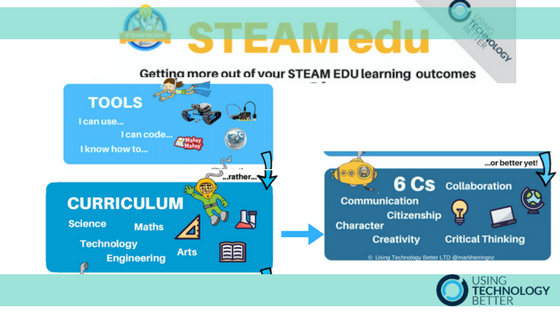How to get more out of your STEAM lessons in class
Have you been engaging your students with STEM or STEAM projects and experiences but wondering how you can better focus the learning? Here are two simple ways you can maximise the learning outcomes for your students and they both begin at the planning phase.
[bctt tweet=”Here are 2 ways you can focus STEAM Learning in areas that really matter!” username=”markherringnz”]
Our digital learning specialists work with schools across Australia, New Zealand and Asia and it’s very common for us to see one simple mistake when teachers are using STEAM learning in their classrooms. The trap they fall into is to focus the student learning on the tool or tool-specific skill. For example, if they are using the Sphero SPRK+ to have the students solve a challenge or problem, the learning that the students gain is ‘How to code the Sphero’ or ‘How to build a bridge for the Sphero to cross.’ Is there anything wrong with that? Not necessarily. I’ve written before how these tools can be an incredibly rich learning tool. It’s just that the tools we use in the classroom are quickly outdated and replaced and therefore shouldn’t be the focus for students.
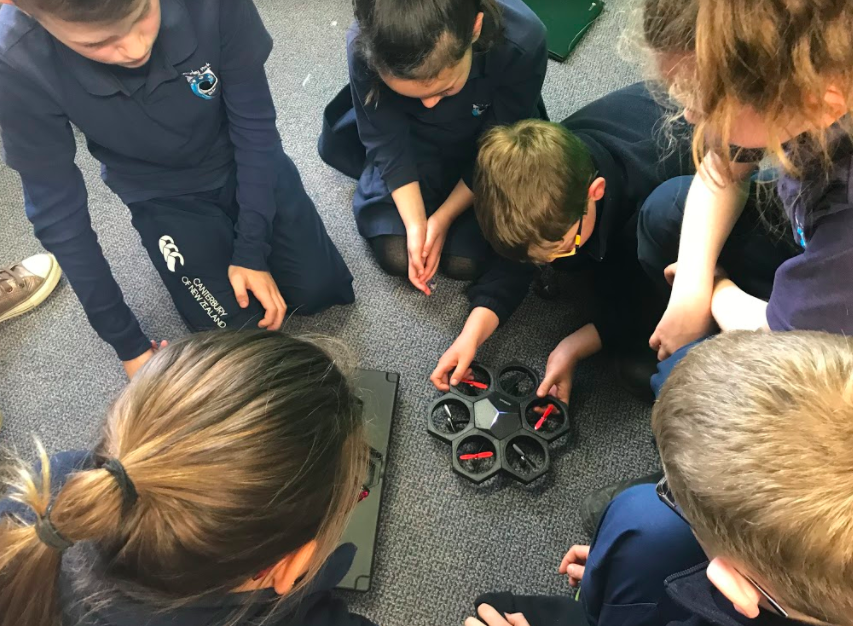
Although, if the teacher starts with considering the ways they can focus students on deeper skills or knowledge, then things that won’t become irrelevant very quickly. Sphero SPRK+ won’t be a technology we perhaps use in the future, and a small bridge made of cardboard is unlikely to help a student in their future career.
Therefore, I suggest that the learning focus for teachers could be around things that will have a long lasting impact and be transferable to multiple scenarios in later life. The question is, what and how do teachers do this? For each of these approaches, we’ll look at some of the things that teachers can do before, during and after the learning experience.
This graphic illustrates how teachers can focus student outcomes on two deeper areas of learning. The first is around Curriculum Learning and the second is on Future Focused Skills, or ‘The 6Cs,’ based on the work of Michael Fullan.
1.Curriculum Integration
This first area of learning, Curriculum Integration, is where the teacher considers the learning outcomes of a variety of curriculum areas, or even perhaps individual areas, and plans the STEAM project from there. They can focus on a specific area to develop and choose the right tool and challenge scenario to help students discover this in collaborative groups.
For example, a teacher may want students to discover and understand mathematical concepts of distance, measurement and orientation. The Sphero SPRK+ could be a perfect tool for this, where the challenge is to navigate the robot through a maze or series of obstacles. Students would code the robot using distinct values of time, measurement units, as well as working with the degrees of an angle.
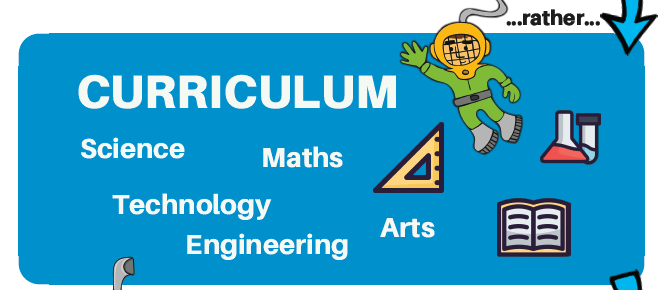
Before the lesson, a teacher would plan the maze to be achievable and challenging. They would identify which key vocabulary they would like to focus students’ attention on during the activity, as well as structuring the maze with the kinds of angles that would suit the students’ abilities.
During the activity, the teacher could be noting some of the conversations that the students have, with a small notebook or on a whiteboard, to help focus their class reflection afterwards. The teacher could also be encouraging students to take photos of the different kinds of angles the robots are taking and recording these as photos with drawing overtop on an iPad, for example.
To help students focus on the mathematical outcomes at the conclusion of the activity, the teacher could be asking groups to share their conversations about what they’ve learned about angles and distance. They could do this via reflective tools such as the video recording app Flipgrid, or sharing with the class as a whole group.
2. The Six Cs
This approach to deepening student learning with STEAM focusses students on the skills they will need to be fully future ready. The work of Michael Fullan and Andy Hargreaves with ‘The New Pedagogies of Deeper Learning’ outline six attributes that are crucial for future success. These are Communication, Creativity, Critical Thinking and Problem Solving, Collaboration, Character, and Citizenship. You can see more of their work and how they explain the importance of these attributes here. At Using Technology Better, we believe that to truly get the most out of STEAM Learning, especially where teachers are the main drivers of the project, teachers can begin with one of these Six C areas as a focus for the activity.
[bctt tweet=”Take your STEAM Learning beyond the tool. Here are 2 ways to help you do that.” username=”markherringnz”]
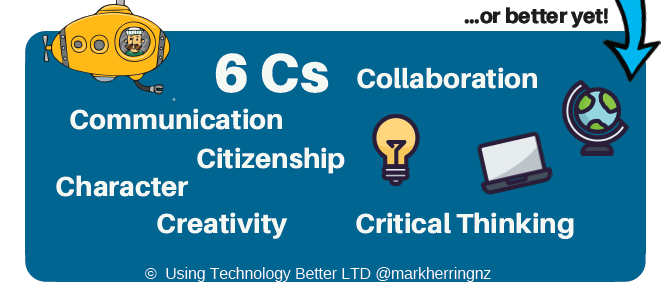
An example of this could be the teacher who wishes to develop the collaborative skills of their students. Being intentional about this would involve, again, thinking about the things they do before, during and after the activity.
So, before the activity, the teacher would consider a tool and activity that would enable students to work in collaborative groups and rely on each other simultaneously to succeed. A fantastic ‘low tech’ activity for this could be the ‘Cup Stacking Challenge’, where students have a problem of building a tower of plastic cups, situated inside a 2-metre circle where they can’t enter or touch the cups with anything apart from string and rubber bands. This challenge requires them to create leavers and pulleys and to work with others to manipulate the cups around.
During the activity, the teacher could have the students discuss in pairs and then as a whole class, about the things that make collaboration work. They could collate these skills into a list and use a discussion basis for their reflection. The teacher could then encourage students to choose one of these as a goal to set for the activity.
After the experience, the teacher may guide a reflection where students rate their goal out of five and give reasons for their rating. They could discuss the impact that their success or otherwise had on the whole group and develop some next steps for future challenges.
This approach of focussing students on an aspect of the Six Cs, is very transferrable to whichever STEAM challenge or tool your students are using. It’s also a fantastic way to get more out of these experiences and to develop your students as capable, future-ready citizens for our modern world. Below is a framework for the whole progression.
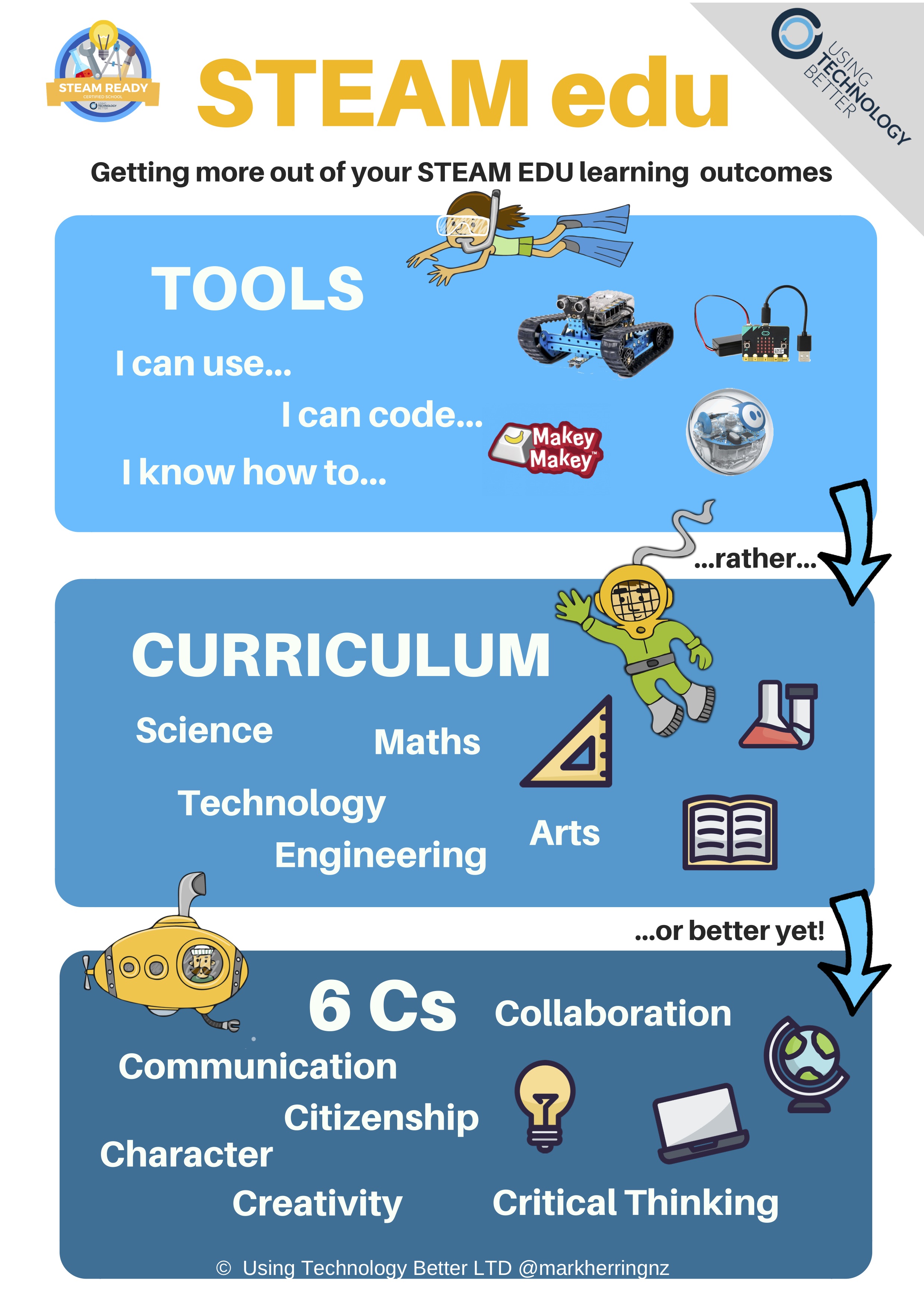
If you’d like some further training, assistance and support with this, we’d love to hear from you. We partner with schools at the leadership and teacher level with our STEAM Ready Programs . Contact us to ask for more information here about these programs
We also run STEAM Learning workshops all over Australia, New Zealand, Asia and the US. Click here to see our upcoming events, our STEAM #1 or #2 workshops, or let us know if you’re interested in hosting a regional event at your school.



